最近用 PVE 虚拟了一个 Windows server 2019 来做下载机,以为有块硬盘用 DiskGenius 慢扫出来严重状态的扇区有三个,所以图形界面不能创建存储池。另辟蹊径,使用官方教程中的“Windows PowerShell 创建存储池的等效命令”强行创建存储池并且组成了 raid0,众所周知,raid0 的性能翻倍但是安全性最差,所以计划将 qBittorrent 下载的文件用现有的自动上传脚本传网盘
Windows 下使用 .sh 脚本
因为现有的脚本是 .sh 脚本是一种为 Shell 编写的脚本程序。Shell 是一个用 C 语言编写的程序,它是用户使用 Linux 的桥梁。Shell 既是一种命令语言,又是一种程序设计语言。Linux 的脚本用在 Windows 下就需要安装 Git。
首先去 Git 官网下载并安装 Git Windows10 版本,一路默认安装就行了。
然后在用户目录(如 C:\Users\Administrator)下创建test.sh,写入以下代码
#!/bin/bash
echo "Hello World !"
保存,右键菜单选择Git Bash Here输入sh ./test.sh,回车
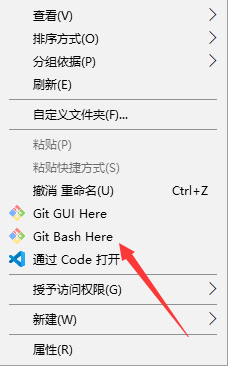
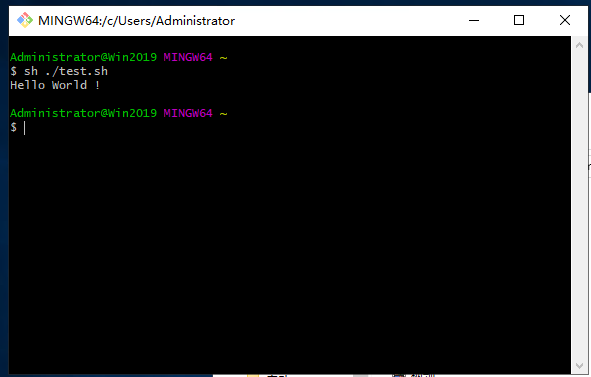
测试成功。
如果想在任何 cmd 窗口直接运行 sh 命令,需将 bash.exe 所在的文件夹添加到 path 环境变量。
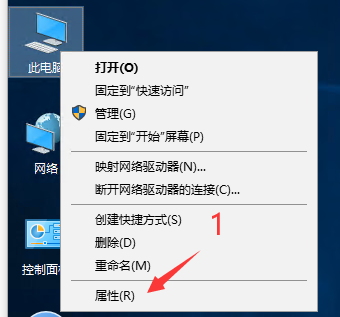
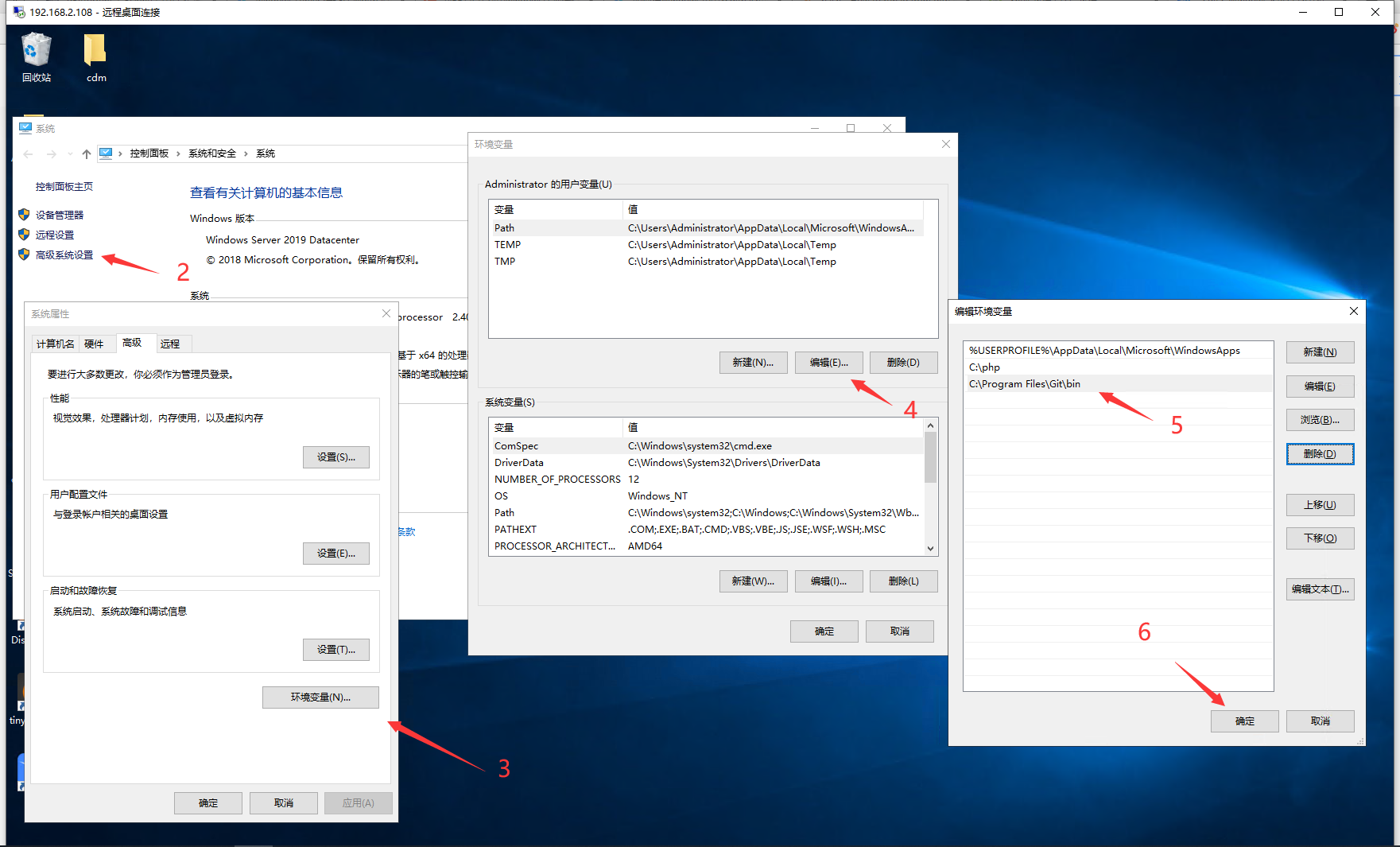
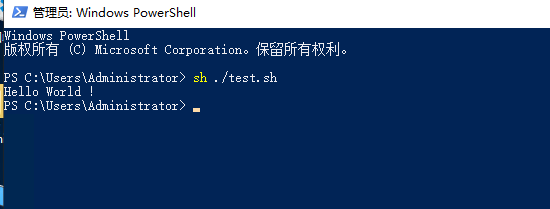
测试成功。
qBittorrent + Rclone 自动上传
脚本基本不变直接放在用户目录即可,脚本下载 txt 后缀改成 sh
#!/bin/sh
qb_version="4.2.5" # 改:改为你的实际qb的版本号
qb_username="" # 改:该为你的qb登录用户名
qb_password="" # 改:改为你qb登录的密码
qb_web_url="http://127.0.0.1:2017" # 查:改为qb的登录地址,一般可以不改
log_dir="qblog" # 改:改为你日志运行的路径
rclone_dest="" # 运行rclone config查看name字段即可;格式就是"XX:"
from_dc_tag="" # 改:上传后的相对根目录,可为空
rclone_parallel="32" # rclone上传线程 默认4
# 下面的也可以自定义,但是推荐不改动
unfinished_tag="Wait_to_upload" # 这个是手动设置某些tag,因为有用才上传
uploading_tag="Uploading"
finished_tag="Uploaded"
noupload_tag="Not_upload"
if [ ! -d ${log_dir} ]
then
mkdir -p ${log_dir}
fi
version=$(echo ${qb_version} | grep -P -o "([0-9]\.){2}[0-9]" | sed s/\\.//g)
startPat=`date +'%Y-%m-%d %H:%M:%S'` # 时间计算方案
start_seconds=$(date --date="$startPat" +%s);
function qb_login(){
if [ ${version} -gt 404 ]
then
qb_v="1"
cookie=$(curl -i --header "Referer: ${qb_web_url}" --data "username=${qb_username}&password=${qb_password}" "${qb_web_url}/api/v2/auth/login" | grep -P -o 'SID=\S{32}')
if [ -n ${cookie} ]
then
echo "[$(date '+%Y-%m-%d %H:%M:%S')] 登录成功!cookie:${cookie}"
else
echo "[$(date '+%Y-%m-%d %H:%M:%S')] 登录失败!"
fi
elif [[ ${version} -le 404 && ${version} -ge 320 ]]
then
qb_v="2"
cookie=$(curl -i --header "Referer: ${qb_web_url}" --data "username=${qb_username}&password=${qb_password}" "${qb_web_url}/login" | grep -P -o 'SID=\S{32}')
if [ -n ${cookie} ]
then
echo "[$(date '+%Y-%m-%d %H:%M:%S')] 登录成功!cookie:${cookie}"
else
echo "[$(date '+%Y-%m-%d %H:%M:%S')] 登录失败"
fi
elif [[ ${version} -ge 310 && ${version} -lt 320 ]]
then
qb_v="3"
echo "陈年老版本,请及时升级"
exit
else
qb_v="0"
exit
fi
}
# 先移除指定tag,后增加自己的tag
function qb_change_hash_tag(){
file_hash=$1
fromTag=$2
toTag=$3
if [ ${qb_v} == "1" ]
then # 这里是添加某些tag的方法
curl -s -X POST -d "hashes=${file_hash}&tags=${fromTag}" "${qb_web_url}/api/v2/torrents/removeTags" --cookie "${cookie}"
curl -s -X POST -d "hashes=${file_hash}&tags=${toTag}" "${qb_web_url}/api/v2/torrents/addTags" --cookie "${cookie}"
elif [ ${qb_v} == "2" ]
then
curl -s -X POST -d "hashes=${file_hash}&category=${fromTag}" "${qb_web_url}/command/removeCategories" --cookie ${cookie}
curl -s -X POST -d "hashes=${file_hash}&category=${toTag}" "${qb_web_url}/command/setCategory" --cookie ${cookie}
else
echo "qb_v=${qb_v}"
fi
}
function rclone_copy(){
torrent_name=$1
torrent_hash=$2
torrent_path=$3
echo "${torrent_name}" >> ${log_dir}/qb.log
echo "${torrent_hash}" >> ${log_dir}/qb.log
echo "${torrent_path}" >> ${log_dir}/qb.log
# tag = 待上传
# 这里执行上传程序
if [ -f "${torrent_path}" ]
then
echo "[$(date '+%Y-%m-%d %H:%M:%S')] 类型:文件"
echo "[$(date '+%Y-%m-%d %H:%M:%S')] 类型:文件" >> ${log_dir}/qb.log
type="file"
elif [ -d "${torrent_path}" ]
then
echo "[$(date '+%Y-%m-%d %H:%M:%S')] 类型:目录"
echo "[$(date '+%Y-%m-%d %H:%M:%S')] 类型:目录" >> ${log_dir}/qb.log
type="dir"
else
echo "[$(date '+%Y-%m-%d %H:%M:%S')] 未知类型,取消上传"
echo "[$(date '+%Y-%m-%d %H:%M:%S')] 未知类型,取消上传" >> ${log_dir}/qb.log
# tag = 不上传
qb_change_hash_tag ${torrent_hash} ${unfinished_tag} ${noupload_tag}
return
fi
# tag = 上传中
qb_change_hash_tag ${torrent_hash} ${unfinished_tag} ${uploading_tag}
# 执行上传
if [ ${type} == "file" ]
then # 这里是rclone上传的方法
rclone_copy_cmd=$(rclone -v copy --transfers ${rclone_parallel} --log-file ${log_dir}/qbauto_copy.log "${torrent_path}" ${rclone_dest}${from_dc_tag})
elif [ ${type} == "dir" ]
then
rclone_copy_cmd=$(rclone -v copy --transfers ${rclone_parallel} --log-file ${log_dir}/qbauto_copy.log "${torrent_path}"/ ${rclone_dest}${from_dc_tag}/"${torrent_name}")
fi
# tag = 已上传
qb_change_hash_tag ${torrent_hash} ${uploading_tag} ${finished_tag}
endPat=`date +'%Y-%m-%d %H:%M:%S'`
end_seconds=$(date --date="$endPat" +%s);
use_seconds=$((end_seconds-start_seconds));
use_min=$((use_seconds/60));
use_sec=$((use_seconds%60));
echo "上传完成-耗时:${use_min}分${use_sec}秒"
}
function file_lock(){
$(touch qbup.lock)
}
function can_go_lock(){
lockStatus=$(ls | grep qbup.lock)
if [ -z "${lockStatus}" ]
then
noLock="1"
return
fi
noLock="0"
}
function file_unlock(){
$(rm -rf qbup.lock)
}
function doUpload(){
torrentInfo=$1
i=$2
echo $2
echo ${i}
# IFS保存,因为名字中可能出现多个空格
OLD_IFS=$IFS
IFS="\n"
torrent_name=$(echo "${torrentInfo}" | jq ".[$i] | .name" | sed s/\"//g)
torrent_hash=$(echo "${torrentInfo}" | jq ".[$i] | .hash" | sed s/\"//g)
save_path=$(echo "${torrentInfo}" | jq ".[$i] | .save_path" | sed s/\"//g)
IFS=$OLD_IFS
echo "${torrent_name}";
if [[ $save_path != /* ]]
then
save_path="${save_path}"
fi
torrent_path="${save_path}${torrent_name}" # 这里就是他的本地实际路径,尝试将这里上传上去
can_go_lock
if [[ ${noLock} == "1" ]] # 厕所门能开
then
file_lock # 锁上厕所门
echo '执行上传没事的~~~';
echo ${torrent_name}
echo ${torrent_hash}
echo ${torrent_path}
rclone_copy "${torrent_name}" "${torrent_hash}" "${torrent_path}"
else
echo '已有程序在上传,退出'
return # 打不开门,换个时间来
fi
file_unlock # 打开厕所门,出去
}
# 每次只查询一条数据,!!上传一条数据!!
function qb_get_status(){
qb_login
if [ ${qb_v} == "1" ]
then
completed_torrents_num=$(curl -s "${qb_web_url}/api/v2/torrents/info?filter=completed" --cookie "${cookie}" | jq '.[] | length' | wc -l)
echo "任务数:".${completed_torrents_num}
for((i=0;i<${completed_torrents_num};i++));
do
curtag=$(curl -s "${qb_web_url}/api/v2/torrents/info?filter=completed" --cookie "${cookie}" | jq ".[$i] | .tags" | sed s/\"//g | grep -P -o "${unfinished_tag}")
if [ -z "${curtag}" ]
then
curtag="null"
fi
if [ ${curtag} == "${unfinished_tag}" ]
then
torrentInfo=$(curl -s "${qb_web_url}/api/v2/torrents/info?filter=completed" --cookie "${cookie}")
doUpload "${torrentInfo}" ${i}
# 每次只上传一个数据,否则的话,可能会导致多线程的争用问题
break
fi
done
elif [ ${qb_v} == "2" ]
then
completed_torrents_num=$(curl -s "${qb_web_url}/query/torrents?filter=completed" --cookie "${cookie}" | jq '.[] | length' | wc -l)
for((i=0;i<${completed_torrents_num};i++));
do
curtag=$(curl -s "${qb_web_url}/query/torrents?filter=completed" --cookie "${cookie}" | jq ".[$i] | .category" | sed s/\"//g)
if [ -z "${curtag}" ]
then
curtag="null"
fi
if [ ${curtag} == "${unfinished_tag}" ]
then
torrentInfo=$(curl -s "${qb_web_url}/query/torrents?filter=completed" --cookie "${cookie}")
doUpload "${torrentInfo}" ${i}
# 每次只上传一个数据,否则的话,可能会导致多线程的争用问题
break
fi
done
echo "啥事都不干";
else
echo "获取错误"
echo "qb_v=${qb_v}"
fi
}
qb_get_status
接着安装 jq,以管理员打开 cmd,输入
#安装 chocolatey
@"%SystemRoot%\System32\WindowsPowerShell\v1.0\powershell.exe" -NoProfile -InputFormat None -ExecutionPolicy Bypass -Command "iex ((New-Object System.Net.WebClient).DownloadString('https://chocolatey.org/install.ps1'))" && SET "PATH=%PATH%;%ALLUSERSPROFILE%\chocolatey\bin"
#安装 jq
chocolatey install jq
在左下角搜索栏搜索任务计划程序
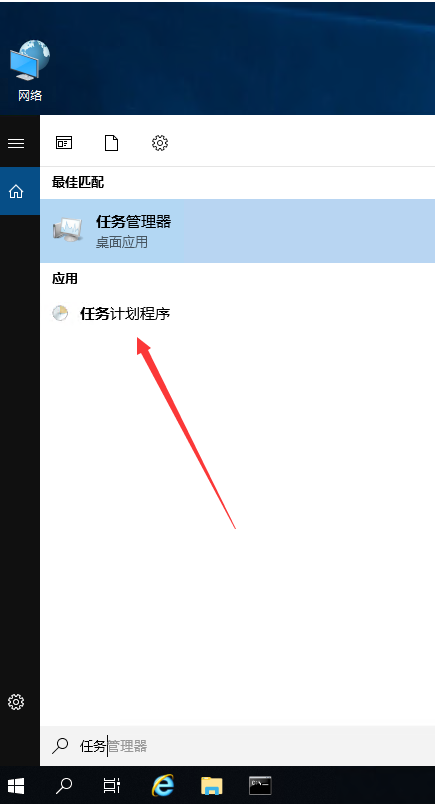
创建任务
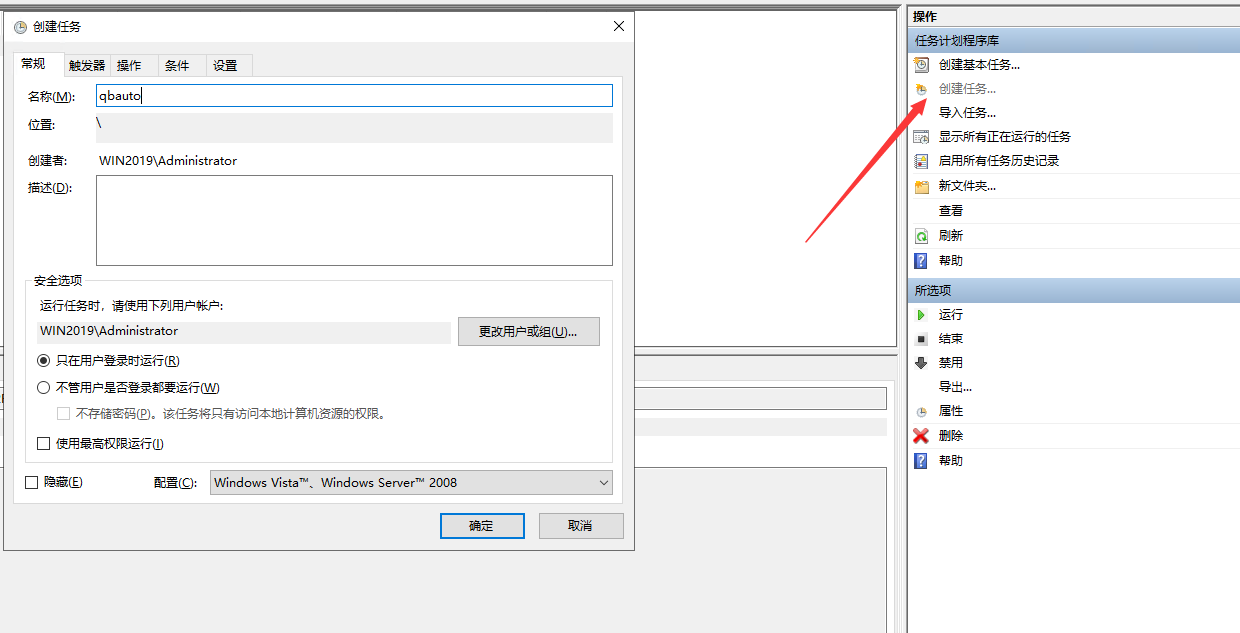
创建五分钟一次触发器
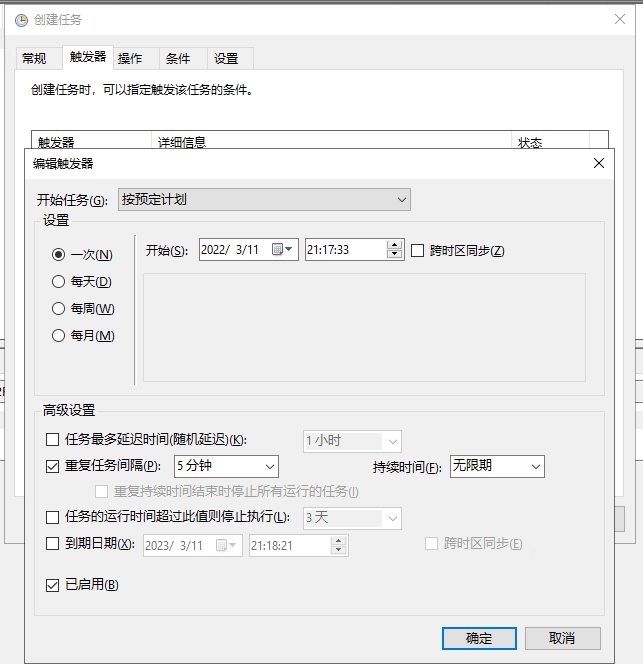
选择脚本
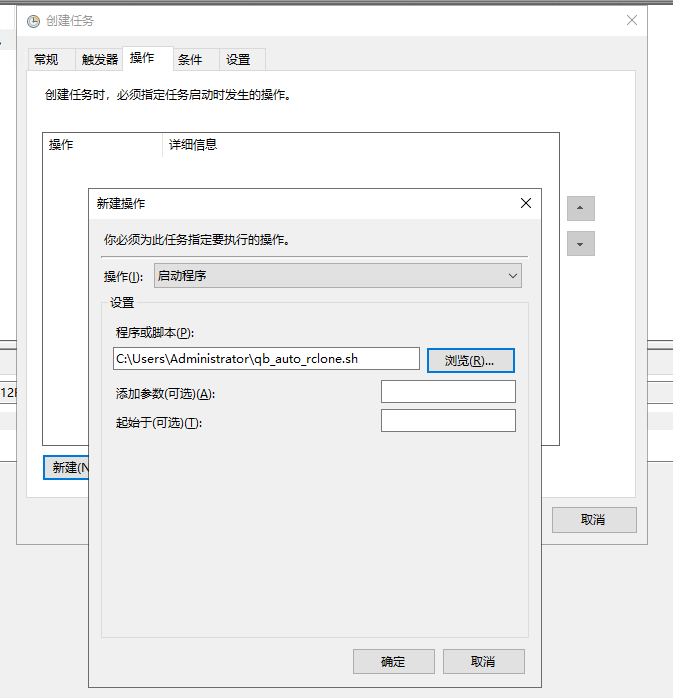
确定,静等触发即可,qBittorrent 设置和前一篇的方法二一样,定时任务默认运行于C:\windows\system32,修改“起始于(可选)”即可修改 qbup.lock 文件生成路径。
后记
Raid0 速度翻倍真的爽,数据丢了哭的惨,自动上传把心安。